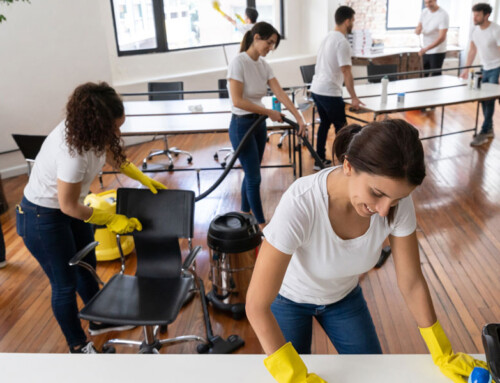Redefining Cleaning for Health

Cleaning for health is a concept well accepted in the professional cleaning industry. Yet there are few objective measures to determine if we are, in fact, cleaning for health or just cleaning for appearances. This is especially true for non-critical facilities, such as office buildings, schools, retail, lodging, and more.
This article identifies some of the key performance indicators that facility and contract managers should consider so they can objectively measure cleaning performance and truly clean for health.
- Measuring the performance of routine surface cleaning
Challenge: Far too often, cleaning performance is determined by meeting task and frequency requirements, using only visual inspection to measure performance. This needs to change, because it is often the things we cannot see, such as viruses, bacteria, spores, dust contaminated with pesticides, insect droppings, and other contaminants that can harm health. Solution: The U.S. Green Building Council (USGBC) recently developed a resource to help facilities use ATP meters and other devices for measuring the actual amount of soil remaining on a surface in a way that is easy to use and cost-effective. See this resource at: com/usgbc. - Measuring when mop bucket water should be changed
Challenge: The traditional approach to changing mop bucket water is based on replenishment after a set number of rooms and has little to do with the actual level of soil in the water. When water is dirty, cleaning personnel are just spreading contaminants. Solution: Turbidity meters are devices routinely used to monitor water quality and can be adapted by the cleaning industry to objectively determine when mop bucket water needs to be replenished to minimize cross-contamination and to truly clean for health. - Measuring concentrated disinfectants for proper dilution
Challenge: Disinfectants are essential to protect health, and using concentrates diluted on site reduces cost and environmental impacts compared to ready-to-use products. These dilution control devices can be extremely inaccurate, resulting in a use-solution that has too little active ingredients to perform against pathogens effectively, or too much concentrate, which wastes money and increases health and environmental impacts. Solution: Test strips are readily available (even Walmart sells them) that test the concentration of active ingredients in common disinfectants, such as quats, chlorine, and hydrogen peroxide. These test strips are easy to use and inexpensive (under five cents each). Considering the importance of disinfectants when cleaning for health, it only makes sense to objectively measure the amount of active ingredients in these products. - Measuring floors for slipperiness
Challenge: According to the U.S. Consumer Product Safety Commission (CPSC), floors and flooring materials contribute directly to more than two million fall injuries each year. While slips and falls do not constitute a primary cause of fatal occupational injuries, it is important to note that they represent the primary cause of lost days from work. Solution: Coefficient of slip or friction devices can objectively measure the conditions of floors to protect occupant health and reduce liability. Let’s get these devices out of the laboratory and into facilities where they can identify potential problems, whether caused by the flooring material, floor coating, or ineffective cleaning for appearances, resulting in slipperiness due to excessive detergent residue, moisture, dust, ice melt, etc.
The Center for Green Cleaning and Sustainability (TC4GCS) is currently developing strategies to provide quantitative, reliable, repeatable, and reportable results and the appropriate corrective actions to truly clean for health. Share comments and resources at TC4GCS.org.


















